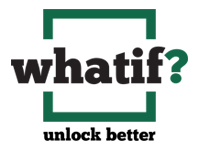
Friction, constraints, vulnerability, and horizontal thinking
People want a friction-free work experience and are voting with their feet to get it.
here is no doubt the operating environment we find ourselves in continues to evolve with more concern for stakeholders. In conversations with clients, I hear consistent themes across the challenges they face coupled with a heightened sense of urgency to address them.
The pandemic exposed the friction in customer fulfillment and the customer experience. This pain is felt by all private and public entities. Add in plugged-up supply chains and accelerated talent mobility, and this puts even more stress on the system. This issue is less of a fix agenda and more of a where-to-from-here agenda. Consumers of all stripes have adopted new habits over the past 18 months and expect businesses to create a rich experience, aligned with their new behaviors. What if we thought about key leadership behavior changes required in addition to the technology enablers to reduce friction and create a much friendlier consumer experience? What would we do differently?
Closely related and equally challenging, are internal operational and systemic constraints. While investment has gone into streamlining and automating processes, the pandemic exposed the soft underbelly of operations. Supply chains and talent shortages contribute, but consumers expect speed and will increasingly vote with their feet if they do not get it. What if eliminating internal constraints to serve customers became the new rallying cry for the c-suite? What outcome-based metrics might they adopt?
The biggest headache of the day is supply chain vulnerability. The consensus is it is going to take at least a year or so to sort out. Rebuilding supply chains, onshoring, etc. does not happen overnight. For example, car dealers cannot get enough product – thank you chip shortage – to meet customer demand. Their showrooms look like they are going out of business. The price is the price with zero room for negotiation. In addition, delivery dates are fluid given parts and labor shortages, and shipping bottlenecks. A fundamental rethink of supply chains is taking place with the big question being will consumers trade price for speed. It is going to be fascinating to see.
An interesting twist on vulnerability is labor. For any service business, talent is the key element of their supply. Just as consumers have adopted new habits, so have employees. People want a friction-free work experience and are voting with their feet to get it. A rebalancing of talent supply and demand is taking place with power moving to the supply-side. What if we see this as less of a productivity issue, and more of a re-evaluation of people’s priorities and values? How might we engage talent around creating an experience that works for all?
The leaders I speak with understand these challenges and their implications, and robust discussion will lead to thoughtful strategic choices. My thinking is the winners will be those who quickly adopt a horizontal thinking mindset. Leaders coming together to reduce friction, constraints, and vulnerability across the organization as well as in their own functions. What if we saw this as an opportunity to break down the silo mindset to win against these challenges? How might we create better experiences for customers, employees, suppliers, and communities?
Much has been written about the rise of stakeholder capitalism. We are in a unique moment in history, and we have a unique opportunity do something extraordinary.


Leave a Reply